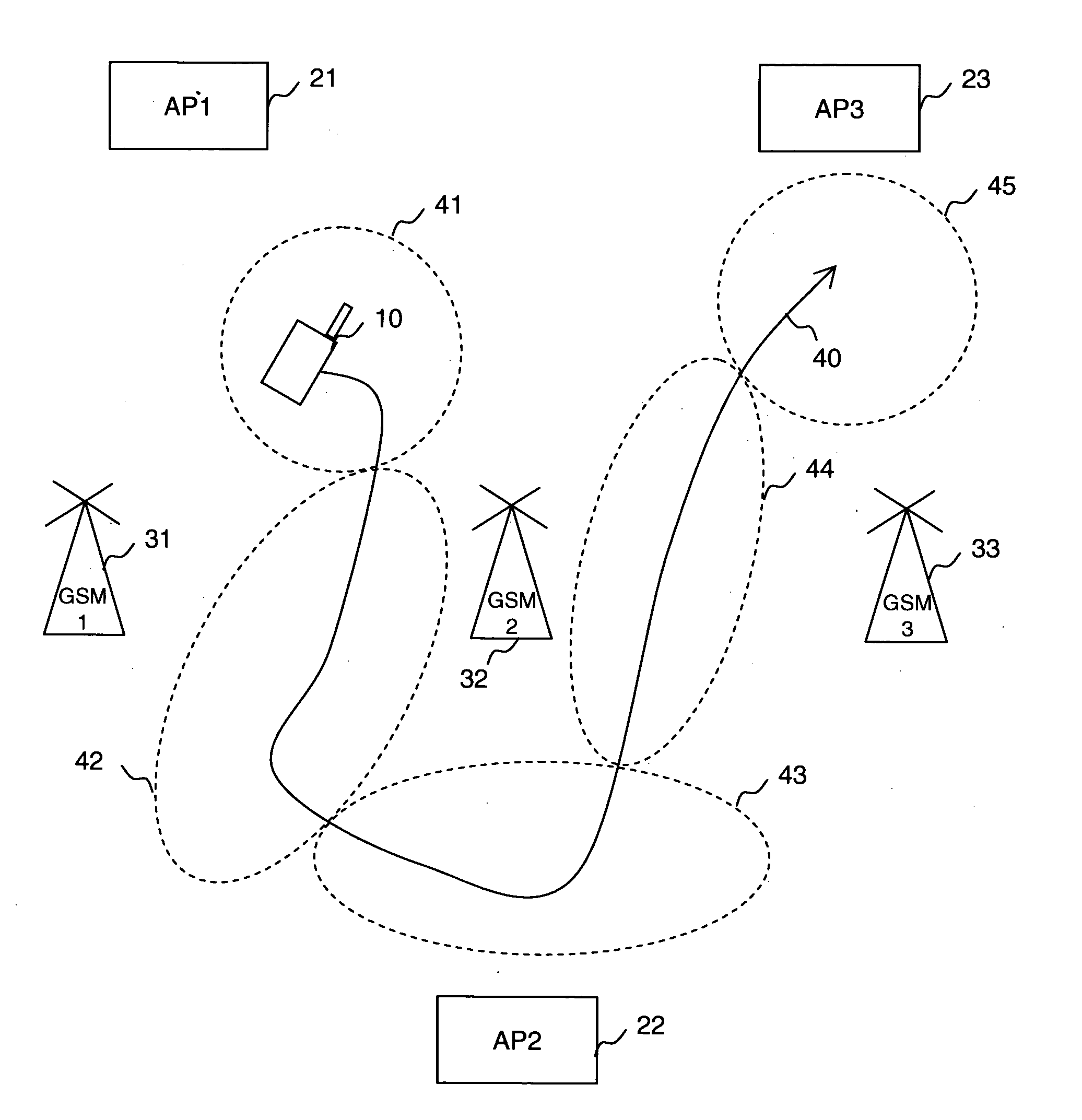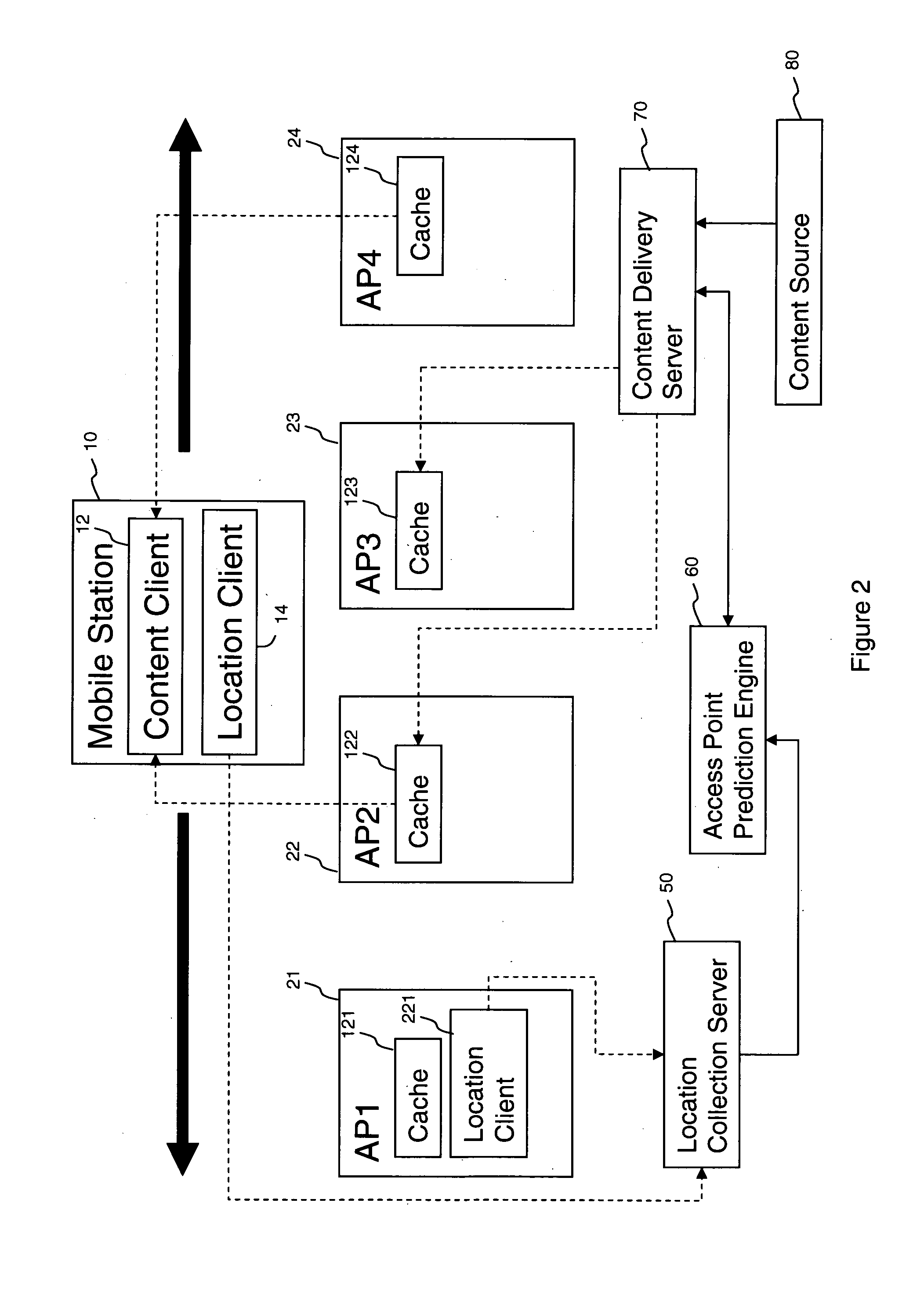Method of transmitting data to a mobile device
a mobile device and data technology, applied in the field of transmitting data to a mobile device, can solve the problem that the method is generally very bad at making predictions over extended time periods, and achieve the effect of easy building up
- Summary
- Abstract
- Description
- Claims
- Application Information
AI Technical Summary
Benefits of technology
Problems solved by technology
Method used
Image
Examples
Embodiment Construction
[0018]FIG. 1 schematically illustrates a typical terrain to which a first embodiment of the present invention applies. The terrain includes first, second and third Access Points (AP's) 21, 22, 23—namely AP1, 21, AP2, 22, and AP3, 23—and first, second and third GSM base stations 31, 32; 33—namely GSM1, 31, GSM2, 32, and GSM3, 33. FIG. 1 also depicts a mobile device and an example path 40 (the dashed, arrowed line 40) followed by the device through the terrain, together with five regions 41-45 (illustrated by the dotted lines 41-45) through which the device's path 40 travels.
[0019]In the present embodiment, the device 10 is a WLAN enabled cellular device which is able to communicate using GSM as well as 802.11 WLAN protocols via GSM base stations 31-33 and WLAN AP's 21-23 respectively, when in range.
[0020]In the first region 41, the device 10 is within range of, and therefore able to communicate with, AP121, GSM131 and GSM232.
[0021]In the second region 42, the device 10 is within rang...
PUM
 Login to View More
Login to View More Abstract
Description
Claims
Application Information
 Login to View More
Login to View More - R&D
- Intellectual Property
- Life Sciences
- Materials
- Tech Scout
- Unparalleled Data Quality
- Higher Quality Content
- 60% Fewer Hallucinations
Browse by: Latest US Patents, China's latest patents, Technical Efficacy Thesaurus, Application Domain, Technology Topic, Popular Technical Reports.
© 2025 PatSnap. All rights reserved.Legal|Privacy policy|Modern Slavery Act Transparency Statement|Sitemap|About US| Contact US: help@patsnap.com



